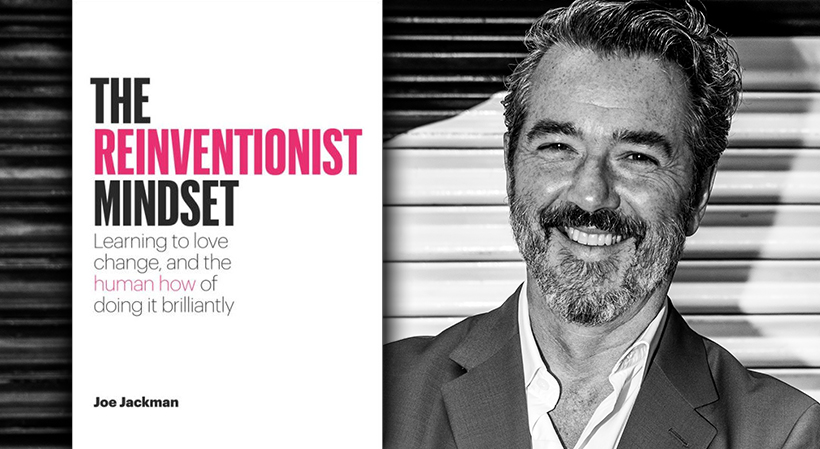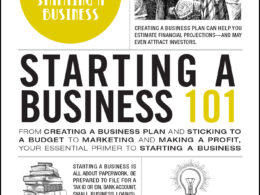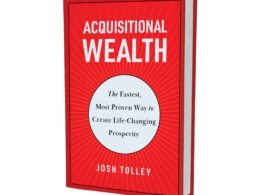The following is excerpted from “The Reinventionist Mindset: Learning to Love Change and the Human How of Doing It Brilliantly” by Joe Jackman, CEO of Jackman Reinvents.
The future. It just sounds like a far-off place. When I was a kid, the word “future” conjured up BIG things. A fantastical world of flying cars and space travel, say. Or a life of adventures and possibilities far beyond what I knew.
Whatever my future would turn out to be, I was sure it would be quite different, and I think this is how many of us grew up and thought about it. The future was a liftoff of some kind, a dramatic change in trajectory—to infinity and beyond!—rather than a more natural path from past to present to what’s next. It is only when I look back on things that I realize the so-called big leaps in my career were perhaps more logical than I initially thought.
StartupNation exclusive discounts and savings on Dell products and accessories: Learn more here
When viewed from 50,000 feet and in hindsight, there has been a purposeful progression from who and what I was, to what I dreamt I could be, to what I became. It’s an important distinction I think; the future is what happens when you move through that simple sequence, and it keeps unfolding when you continue.
The opposite way is to resist. To see and treat pretty much every move forward as a significant departure from the norm and therefore a BIG decision, weighted with risk and gravitas. It isn’t “What if it doesn’t work?” that slows things down, but rather “What if it does?” Played out, this causes the future to be viewed as not only scary but optional.
“Sorry, everyone. We’ve rescheduled the future. It won’t be happening until the timing suits us. We will reschedule it when conditions are right and we can be certain it won’t be so disruptive.”
There are many ways to consciously or subconsciously try to prevent the future from coming, and all of them are laughable. I’m reminded of the Grinch, who determined he “must stop Christmas from coming!” The future arrives regardless of our attitude and readiness for it. What we miss during all this avoidance, done in the name of prudence, is that when the future does arrive, as it always does, our readiness for it depends in great part on whether or not we had a hand in shaping it.
Imagine two hypothetical companies with a similar business model, and each about to be impacted by technology.
One begins experimenting with new ways to apply technology to its business in small ways, learning from its failures while growing comfortable with the tools and possibilities.
Related: How to Future-Proof Your Innovation
The other resists and procrastinates, seeing in the technology only unreasonable expense and a threat to its very way of doing things.
Which do you think had the better chance of evolving into the future when the world shifted, technology became cheaper and more pervasive, and technology-led startups began arriving on the scene?
We all have a choice. But unless we actively do the choosing, decisions get made for us. This too is human nature. Unless we happen to be hard-wired entrepreneurs, the majority of us build things not to tear them down and rebuild them, but to see them maintained. We protect what we have built because, well, we built it. And from whom are we protecting it? From those who would do it differently. From those who think there is a better version. From those unreasonable people upon whom all progress relies.
In short, we’re protecting it from the future. As crazy as this may sound, it’s true. Today in the business zeitgeist, there is this idea floating around that everyone needs to “future-proof ” their business. Yikes. We don’t need to future-proof our businesses, to prevent bad and unknown things from happening to them.
We need to actively engage in writing our own futures, to be authors of the unknown and therefore in control of our own stories.
The only thing we should want to protect is the story itself, no matter where it leads. The only thing we should fear is getting stuck in any particular chapter, bringing the book to a precipitous end.
Alan Kay, formerly Chief Scientist at Atari and member of the famed Xerox ParC organization, famously said, “The best way to predict the future is to invent it.”
I would add: the best way to ensure it’s to your liking is to continually reinvent it and do it quickly.
Sign Up: Receive the StartupNation newsletter!
Here is how to create the future now
- Pay attention: Tune in to what is happening around you at present. What are your customers asking for and complaining about? How are your associates responding and what do they see as opportunity? If there are things that appear to matter, they likely do.
- Never wait: If you see change coming your way, or an opportunity to create change yourself, do it. And do it fast. The world isn’t waiting for you to get your act together. Put things in motion. Simulate the future now. A sidebar to your business can turn out to be your business, but only if you are the one who gives it a try. You’ll never have to bet the farm if you keep planting and harvesting future seeds.
- Distinguish between doing things to win and doing things to learn: Stop making everything about performance improvement and financial metrics. This forces you into a predictable mode of making only functional refinements. While this is an essential discipline, it must be paired with a more expansive view of what’s possible. Continually exploring creative new ways to engage and satisfy customers—trying things beyond the obvious, beyond your current model—are where the game changers of the future live.
- Have fun: The future is exciting, and it is both a privilege and a blast to be a part of figuring it out. Be sure to fully participate with the right attitude, and help others do the same.
“The Reinventionist Mindset: Learning to Love Change and the Human How of Doing It Brilliantly” is available now wherever books are sold and can be purchased via StartupNation.com.






